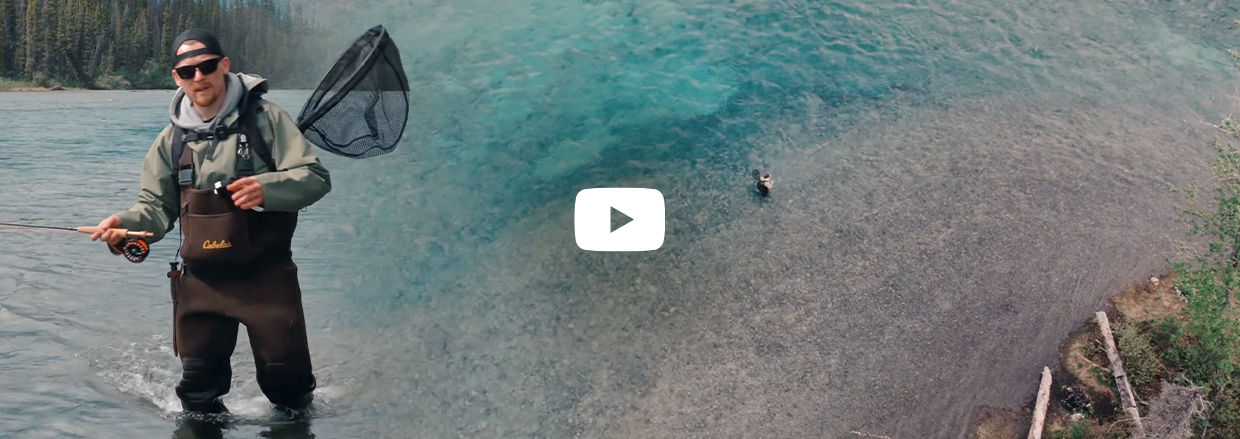Fly Fishing

The Art of Fly-Fishing
Fly-fishing is a fantastic way to enjoy solitude and revitalize yourself in nature. At Bass Pro Shops and Cabela’s Canada, we share your passion. Whether you are honing your skills or just starting, with expert tips and high-performance gear, you can cast, conquer, and celebrate.
Speak the Language of Fly-Fishing

Here are a few fly-fishing terms to help you get started.
Reading Water
Pool: A deep section of the river with little visible flow.
Riffle: Fast water units.
Pocket water: Broken structures that creates pockets and holds a lot of fish.
Run: Also known as glide, it refers to a stretch of river with uniform depth and speed, ideal for holing fish.
Seam lines: Good holding spots for fish. Seam lines are an inner edge of the transition from a pool to faster water.
Tail-out: It is a downstream end of the pool before it changes to a faster water unit.
Fish Interaction
Boil: A fish may go for the fly but turn back at the last minute. It leaves a boil on the water’s surface and is a chance to switch to a different fly.
Line, Leader, Reel
Drag: This defines how easily the line pulls out of your reel. Your drag should not be set too tight or loose.
Tippet: A thin and clear line is added to the leader to achieve the desired line thickness.
Backing: A thin braided material is attached to a reel & connected to the fly line to hold a lengthy line.
Sinking line: A fly line that sinks across the entire length of the line.
Flies & Fly Tying
Wet fly: A fly that is fished underwater (such as a nymph).
Dry fly: A fly that floats on the surface of the water. It usually imitates an adult insect.
- Shelter or Nesting Area: Fish seek shelter in deeper waters. Look for breaks in the run, such as seams, break lines or mini swirls to find the nesting areas.
- Feeding Lane: This is moving water or a current that brings a meal to the trout. It is a section where the trout selects his food. The feeding lanes increase, or decrease based on how close the trout is to the surface of the water. The closer to the surface, the smaller the feeding lane.

- Holding Grounds (Lie): Here, the fish stays put with minimal effort while waiting for food. You can find holding grounds behind or in front of the rocks that break the current and allow the stream to bring food to them.

Note: Anytime water hits a solid object like a rock, the water slows down the current and provides an optimal holding ground for fish. When the water hits these objects, it creates seams, and as a fly fisher, you should always be on the lookout for seams.
Where to find seams?
- Head of a Pool: When the fish are actively feeding, they gather at the head of the pool (where the faster water is coming into the slower area). This area has minimal water resistance, making it a perfect feeding zone.
- Tail of a Pool: The head of the pool and tail of a pool are two optimal zones for that speed.
- Front Seam: The front seam, known as the pillow seam, is where the water hits against the rock and slows down the current at once. Trout likes to hold back here and wait for the food to come to them.
- River Bend Seam: The water slows down just enough for the trout to hang out. You can fly-fish here to cover a large area in less time.
- Undercut Embankments: These embankments are perfect hiding places from danger and offer the fish easy access to food.

Tip: Approach from the opposite side when fishing embankments and cast closely to let the rig float.

License and Regulations
In Canada, every province has different requirements, rules, and regulations for fly-fishing. Refer below before you head out for a day at the river.

